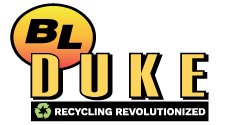
After a year marked by stagnant or falling scrap prices, Chicago’s ferrous scrap metal market ended 2024 on a soft-sideways note, bringing on a case of winter blues as 2024 comes to a close.
Chicago’s Ferrous Scrap Market
Ferrous scrap metal prices in Chicago held steady for prime grades in December, while obsolete grades saw a slight decline, dropping by $10 per gross ton compared to November. December’s market was shaped by unseasonably mild weather, which maintained steady scrap flows, and stagnant HRC prices, which limited steel mills’ purchasing power. Additional pressures included declining pig iron prices, weak domestic demand, and subdued export activity. Year-end inventory management practices further suppressed buying interest. While many mill outages wrapped up earlier in the year, their prolonged impact on reducing scrap demand has continued to weigh heavily on the market, preventing the traditional December price increases of previous years.
“Here’s to hoping 2025 brings improved scrap metal demand and prices,” says Lou Plucinski. “I’m more than ready to leave 2024’s stagnant prices in the rearview mirror.”
Chicago’s Non-Ferrous Scrap Market
In December, the copper market has shown promising signs, with prices reaching their highest level in nearly a month. This comes after China, the largest consumer of copper, announced plans to adopt an “appropriately loose” monetary policy in the coming year—the first such shift since 2010—along with a more proactive fiscal approach aimed at stimulating economic growth. However, despite these developments, Citi analysts have lowered their copper price forecast, citing concerns over potential trade tariffs from the new Trump administration in the U.S. and ongoing economic risks in China, which could suppress consumption and prices in the coming year.
 The stainless steel scrap market faces significant challenges for the remainder of 2024, driven by several factors. Declining nickel prices, a critical component in stainless steel production, have applied downward pressure on scrap values. Additionally, global stainless steel production has contracted, reducing demand for scrap. Economic slowdowns in key regions, such as Europe and North America, have further weakened demand for stainless steel products, exacerbating the decline in scrap prices. Compounding these issues are inflationary pressures and increased imports from Asia, which have added complexity to market conditions.
The stainless steel scrap market faces significant challenges for the remainder of 2024, driven by several factors. Declining nickel prices, a critical component in stainless steel production, have applied downward pressure on scrap values. Additionally, global stainless steel production has contracted, reducing demand for scrap. Economic slowdowns in key regions, such as Europe and North America, have further weakened demand for stainless steel products, exacerbating the decline in scrap prices. Compounding these issues are inflationary pressures and increased imports from Asia, which have added complexity to market conditions.
Meanwhile, the aluminum market remains steady, with both primary and secondary grades holding largely unchanged. Market stability heading into the new year is seen as a positive indicator. December typically sees reduced mill and smelter activity, as most consumers have already secured sufficient material to begin 2025. However, there is slight upward pressure on certain grades, which could signal a favorable trend for the aluminum market in the coming year.


